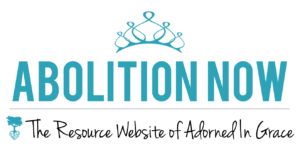
This is the season of togetherness—families crowded around Thanksgiving tables, frost glittering on windows during late-night hot chocolate and decorating, and Frank Sinatra’s “I’ll Be Home for Christmas,” crooning through the radio. It’s the season of cookie baking, tree cutting and homecoming.
But what if you can’t be home for Christmas?
The “Tell Me Why” Series—Part One
One of the most common questions we are asked, once people are confronted with the reality of human trafficking is, “why?” How did it get to this point? How have the statistics grown so shockingly large? The purpose of this series is to highlight some of the contributing factors that leave children, teens, and even young adults vulnerable towards being trafficked. As always, it is never our goal to simply point out flaws in any system or organization, but rather to point towards realistic, redemptive solutions.
This is the season of togetherness—families crowded around Thanksgiving tables, frost glittering on windows during late-night hot chocolate and decorating, and Frank Sinatra’s “I’ll Be Home for Christmas,” crooning through the radio. It’s the season of cookie baking, tree cutting and homecoming.
But what if you can’t be home for Christmas?
Every year, thousands of foster children and teens spend the holidays with other families, separated from parents, grandparents, and even siblings. Many foster parents do their best to make these children feel at home and welcome, no matter what the season. Yet the holidays have a special knack for bringing up memories, or perhaps just the longings for memories they never had. After being bounced from placement to placement to yet another placement, it’s no wonder that they can feel very much alone.
This desire for belonging—which is really the desire for love—is at the root of what makes children in foster care especially vulnerable to being trafficked. Often these children have experienced abuse or neglect from their own families and never grew up with a sense of safety, security, or love. Traffickers prey on their need for acceptance, and without the strong presence of family accountability, these young adolescents do not realize the choice they are making until it’s too late.
Most foster children end up being placed in multiple foster care homes, or even group homes, before aging out of the system. This constant uprooting keeps them from building long-term, meaningful relationships, especially with older adults who could act as mentors in their lives. One recent study on foster teens, who experienced trafficking and exploitation, determined:
“The youth were highly mobile, their families highly transient and their contacts with potentially supportive adults were frequently spread across several states. Thus the supportive adults identified by the youth were often inaccessible and unavailable to provide on-going support. With few connections to their immediate community, finding new supportive adults presents a challenge for these youth. And such adults did not seek youth out in the same ways that pimps and abusers did. Thus these narratives point to a need to assist youth in forming new, meaningful connections with helpful, positive and pro-social adults and to create environments in which such adults can be encouraged to offer support to teens and young adults.”
Because of these factors, it is estimated that a large percentage of men and women, currently being trafficked, spent part of their childhood within foster care. Isolated, traumatized and vulnerable, this population is at a high risk for being manipulated into trafficking without another strong presence in their lives. But what can we do?
Jiliana Goble calls the issue, “so multifaceted and complex…people feel overwhelmed. They think, ‘What can I really do?’” Goble, the founder of Embrace Oregon, is doing her best to show people the opportunities to engage are nearly limitless. From packing welcome boxes for new foster kids, to helping your church host a Foster Parent’s Night Out, to babysitting and supporting a foster family within your own church, the community response to her initiative has been incredible.
So far, over 800 volunteers and 65 churches have partnered with DHS to provide support for foster kids and families—and Goble says she’d like to see the numbers continue to grow. Not only are they looking for more volunteers and churches, however, but more foster families stepping up from within the church to give these children a stable, loving home. “This is the frontline of society’s most heartbreaking situations,” Goble urges. “[DHS is] on the front lines of doing what the church is called to do. These are our community’s children. The community needs to be part of the solution.”
Embrace Oregon is highlighting the number 884 this year as they encourage families in the church to take these children in. Eight hundred eighty-four is the estimated number of additional foster care placements that must be available before caseworkers are given the “luxury of choice,” placing children in environments that are best suited for their needs and keeping siblings together more often. A lack of homes also greatly contributes to the constant re-placements children face.
So, how can we reach these vulnerable children and prevent their deception and bondage?
“I think it ties back to giving kids a loving, stable family that’s there for the child [and] in it for the right reasons,” says Goble. Even if you cannot be a foster parent, find a foster child in need of a mentor. Support and encourage the foster parents who live around you. Invest some time into partnering with your local DHS office. The possibilities are nearly endless—click here to learn more.
Because, even when the holidays are over, each of these precious children will still want a place to belong.

